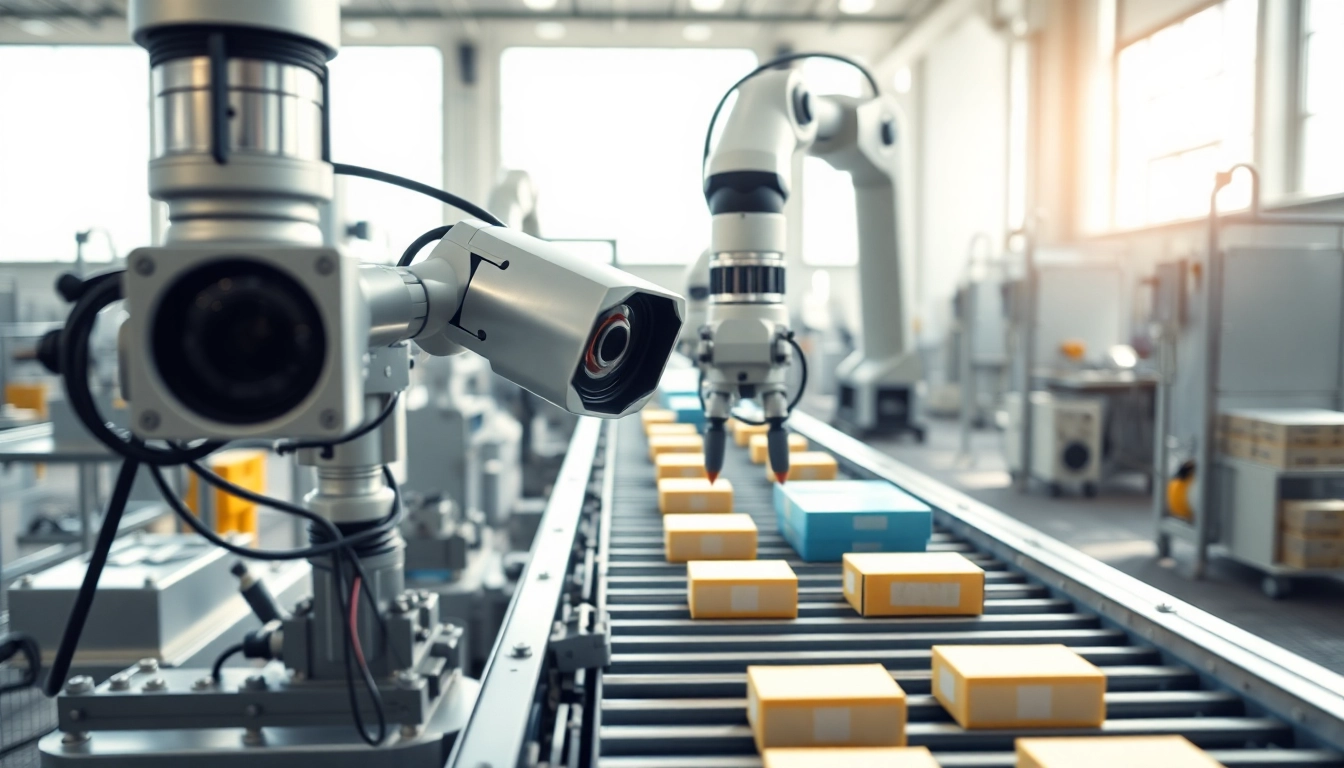

Reliable Dog Poop Pickup Services: Keeping Your Yard Clean and Safe
As a dog owner, you are likely aware of the various responsibilities that come with caring for your furry friend, and one of the most unpleasant yet essential tasks is managing their waste. Regular and effective dog poop pickup is not only crucial for maintaining a clean and hygienic yard but also for ensuring the health of your dog and the environment. In this article, we will explore the significance of efficient dog waste management, the range of services available, tips for choosing the right service provider, associated costs, and practical DIY techniques for effective poop management.
Understanding the Importance of Dog Poop Pickup
Why Cleanliness Matters
Cleanliness around our living spaces contributes significantly to our well-being. Pet waste can pose serious threats not only to your own health but also to the health of others, including pets and wildlife. Regular removal of dog poop from your yard is vital as it prevents the accumulation of bacteria, parasites, and unpleasant odors. It creates a cleaner, safer environment for your family, guests, and your neighborhood.
Health Hazards of Dog Waste
Dog feces can harbor numerous pathogens, including bacteria such as E. coli and Salmonella, which can cause serious health issues in humans and other animals. Furthermore, it can carry parasites like hookworms and roundworms, which can lead to severe infections if homeowners or their pets come into contact with contaminated soil or surfaces. By keeping your yard clean of dog waste, you significantly reduce the risk of these health hazards.
Environmental Impact of Neglected Pet Waste
The environmental consequences of neglecting dog waste can be quite severe. When left unattended, feces can wash into local waterways during rain, contributing to water pollution and harming aquatic life. Besides, the nitrogen and phosphorus present in dog poop can lead to nutrient pollution, causing algae blooms and ecosystem disruption. By ensuring proper disposal of pet waste, dog owners can contribute positively towards environmental sustainability.
Services Offered in Dog Poop Pickup
Standard Pet Waste Removal
Most dog poop pickup services provide standard pet waste removal, which typically includes scheduled visits to scoop up and dispose of waste from your yard. These services can often be tailored to fit your specific needs, whether it’s a weekly or biweekly schedule, ensuring that your yard remains clean and inviting for both your pets and your family.
Specialized Cleanup for Large Yards
Homeowners with larger properties may require specialized services that account for the increased area needing attention. Some companies offer customized plans for larger yards, ensuring that every corner is covered. They can also adjust frequency or allocate more personnel to ensure that dog waste is picked up efficiently, keeping your yard cleaner for longer periods.
Optional Services: Disinfection and Deodorization
Beyond simple waste removal, many professional services offer optional cleaning features, including disinfection and deodorization of areas where your dog frequently goes. These methods not only eliminate lingering odors but also help kill the bacteria and germs that may remain after waste removal. Consider adding these services to your package for a thoroughly clean outdoor area.
Choosing the Right Dog Poop Pickup Service
Factors to Consider When Hiring
When selecting a dog poop pickup service provider, consider the following factors:
- Reputation: Look for companies with positive reviews and testimonials from previous clients. This can provide valuable insight into their service quality and reliability.
- Experience: Choose a service with experience in dog waste management. Experienced professionals will be more knowledgeable about effective waste removal and proper hygiene practices.
- Insurance and Guarantees: Make sure that the company is insured and offers satisfaction guarantees to protect you in case of any issues that arise during the service.
- Equipment and Methods: Find out what methods the company uses for waste removal and if they employ environmentally-friendly or safe practices.
Comparing Local Providers
To make an informed decision, compare several local providers. Look beyond pricing; assess their range of services, customer feedback, and overall reliability. Additionally, inquire if they offer customized services specific to your needs or if their services are one-size-fits-all. Contacting companies to ask questions and gauge their customer service levels can also provide insight into their professionalism.
Customer Reviews and Testimonials
Reviews and testimonials can serve as testimonials to a company’s effectiveness. Websites like Yelp and Google Reviews are valuable resources to look for firsthand accounts from users about their experiences. Pay special attention to any mentions of the company’s efficiency, pricing, attitude, and overall customer satisfaction. This feedback can guide your decision-making process significantly.
Costs Associated with Dog Poop Pickup
Typical Pricing Models in Your Area
The cost of dog poop pickup can vary widely based on location, the size of your property, and the frequency of service. In general, here are some common pricing models you might encounter:
- One-Time Services: A one-time visit might range from $40 to $70, depending on the yard size and condition.
- Weekly Services: Many companies offer weekly discounts, with prices averaging $15 to $25 per visit.
- Biweekly Services: This would typically cost a bit more per visit than weekly, ranging from $25 to $40.
Understanding Service Packages
When exploring service providers, it is essential to review their packages carefully. Some may offer bundled services that combine waste pickup with yard maintenance or fertilization at competitive rates. Understanding how these packages work and what they include can help you save money and ensure you get the best service for your needs.
Tips for Negotiating Service Costs
If you find a provider you are interested in but their pricing seems high, consider the following negotiation strategies:
- Ask About Discounts: Many companies offer seasonal discounts or promotions that you can take advantage of.
- Package Deals: Inquire if there are any package deals that might save you money compared to paying for services separately.
- Long-Term Contracts: If you commit to a longer contract, you might negotiate a lower rate or extra services.
DIY Tips for Effective Dog Poop Management
Tools of the Trade: What You Need
If you prefer to handle dog waste management yourself, having the right tools is essential. Consider the following tools:
- Pooper Scooper: This tool is designed to easily pick up waste without needing to touch it directly. They’re available in various designs to suit different preferences.
- Biodegradable Waste Bags: Investing in good quality, eco-friendly waste bags ensures proper disposal without harming the environment.
- Disposable Gloves: Wearing gloves can help maintain hygiene and prevent bacteria transfer.
- Odor Neutralizers: Keeping a safe odor neutralizer handy can help manage smells during and after the cleanup process.
Best Practices for Quick Cleanup
For an efficient cleaning process, here are some best practices:
- Timing: Make it a habit to clean up right after your dog does their business to prevent waste accumulation.
- Daily Walks: Consider walking your dog in a designated area, where waste is easier to clean and won’t clutter your yard.
- Form a Routine: Create a regular schedule for waste cleanup to ensure you stick to this frequently neglected task.
Maintaining a Clean Yard: Routine Tips
Finally, it’s important to maintain a clean yard consistently. Follow these tips to create a routine that keeps your yard free of dog waste:
- Regular Inspections: Regularly inspect your yard, especially if your dog spends a lot of time outdoors. The sooner you can identify and address waste, the easier your clean-up will be.
- Encourage Others to Help: If you have family members, encourage them to pitch in, making waste management a shared responsibility.
- Reward Your Dog: Reward your dog for going in designated areas, which can help you determine where to focus your cleanup efforts.
In conclusion, regular dog poop pickup is a vital part of responsible pet ownership, impacting both health and environmental aspects. Whether you choose to hire a professional service or manage it yourself, understanding the benefits and best practices involved can make this essential task easier and more effective. By taking the necessary steps towards effective dog waste management, you not only protect your family and pet’s health but also keep your neighborhood welcoming and your outdoor space enjoyable.

Plan the Perfect Wildfire Event in Perth for Children and Families
Understanding Wildfire Events in Perth
Definition and Significance
Wildfire events in Perth represent a vibrant intersection of community engagement, educational opportunities, and fun activities specifically designed for children and families. These events encompass a wide array of activities that promote not just enjoyment but also awareness and knowledge related to fire safety and environmental stewardship. By facilitating learning experiences, these events play a crucial role in fostering a safer community that is well-prepared for wildfire situations. Engaging with local factors, attendees gain insights into the unique biodiversity of Western Australia and the importance of conservation practices. Notably, wildfire event perth creates a platform that is both informative and entertaining for participants of all ages.
Types of Wildfire Events in Perth
In Perth, wildfire events can typically be categorized into several types, each tailored to different interests and age groups:
- Educational Workshops: These workshops are designed to equip participants with knowledge about fire safety, prevention measures, and the ecological impacts of wildfires. Often led by fire experts or local environmentalists, they ensure attendees leave with a deeper understanding of how to protect themselves and their environments.
- Interactive Family Fun Days: Aimed primarily at family participation, these events combine fun activities like fire-themed obstacle courses, scavenger hunts, and demonstrations that engage children while educating them about fire safety.
- Community Awareness Campaigns: These events focus on raising awareness within the community regarding wildfire risks and the importance of preparedness. They may include local speakers, giveaways, and interactive displays.
- Adventure and Challenge Days: Designed for older children and teens, these events offer activities such as hiking, camping, and survival skills training, emphasizing teamwork and resilience in the face of emergency situations.
Benefits of Attending Wildfire Events
Participation in wildfire events offers numerous benefits, including:
- Educational Value: Attendees gain vital knowledge about fire safety, ecological preservation, and emergency response strategies.
- Community Building: These events foster connections among community members, creating a supportive network that enhances community resilience.
- Development of Life Skills: Participants learn essential life skills such as teamwork, leadership, and problem-solving while engaging in fun activities.
- Physical Activity: Many activities included in these events promote physical fitness, encouraging a healthier lifestyle among participants.
Key Activities to Include in Your Wildfire Event
Fun Games and Challenges
Incorporating fun games and challenges can significantly enhance the enjoyment and educational value of wildfire events. Some engaging activities to consider include:
- Fire Safety Relay Races: Teams compete in a relay race involving tasks related to fire safety, such as assembling firefighting equipment or completing fire prevention puzzles.
- Obstacle Courses: Design an obstacle course that simulates navigating through bushland with fire risks, teaching participants how to respond effectively in an emergency.
- Trivia Quizzes: Host a trivia contest with questions focused on local wildlife, plant species, and fire safety, rewarding participants with prizes that encourage ongoing learning.
Interactive Learning Sessions
Creating opportunities for interactive learning is essential for conveying important messages during the events. Some effective ideas include:
- Hands-on Demonstrations: Collaborate with local fire services to provide demonstrations on how fire trucks work, fire extinction techniques, or even guided fire drills to give participants a practical understanding of fire safety.
- Expert Talks: Invite environmental experts or firefighters to discuss wildfire preparedness, emphasizing local ecosystems and safety precautions while allowing time for Q&A sessions to engage the audience further.
Community Engagement Opportunities
Fostering community engagement through collaboration can amplify the impact of wildfire events. Consider incorporating the following into your events:
- Local Partnerships: Work with local businesses, schools, and nonprofits to broaden the event’s scope. Sponsorships can provide resources while enabling community members to participate.
- Volunteer Initiatives: Involving community members as volunteers for event setup and activities encourages ownership and pride in local initiatives around fire safety and awareness.
Logistics for Organizing a Successful Wildfire Event
Choosing the Right Venue
Selecting an appropriate venue is vital for the event’s success. Factors to consider include:
- Accessibility: Ensure the venue is easy to navigate for participants, especially families with children. Adequate parking and public transport access will encourage higher attendance.
- Space Requirements: Evaluate the type and size of activities planned to ensure there’s enough space for participants to engage comfortably without overcrowding.
- Safety Features: Choose venues that prioritize safety, such as those with emergency exits, first-aid stations, and proximity to emergency services.
Essential Permits and Regulations
Organizing a wildfire event necessitates compliance with local laws and regulations. Essential steps include:
- Permit Applications: Research the necessary permits to host events in public spaces. This may include noise permits, food vendor licenses, and other local governmental requirements.
- Insurance Considerations: Obtain liability insurance to protect against any incidents that occur during the event, ensuring all measures for safety are prioritized.
Planning for Safety and Emergency Responses
Ensuring participant safety is paramount. Effective strategies involve:
- Emergency Response Plans: Develop a comprehensive response plan for potential emergencies that includes evacuation routes and procedures for medical emergencies.
- First Aid Stations: Have trained personnel available on-site with equipment to address any medical emergencies and ensure immediate response capabilities.
Marketing Your Wildfire Event in Perth
Effective Online Promotion Strategies
Online marketing is crucial for promoting wildfire events effectively. Consider these strategies:
- Search Engine Optimization (SEO): Optimize your event website and content for search engines, incorporating keywords such as “wildfire event Perth” to enhance visibility.
- Email Marketing: Send targeted newsletters to your existing database to promote upcoming events, providing details and an easy registration process.
Leveraging Social Media
Social media platforms can significantly enhance reach and engagement. Here’s how to use them effectively:
- Creating Shareable Content: Develop visually appealing graphics and videos related to the event that participants would want to share, helping to spread community awareness.
- Facebook Events: Utilize Facebook’s event tools to create an event page where users can RSVP, share, and invite friends. Regular updates keep the excitement alive.
Engaging Local Partnerships
Forming partnerships with local businesses and organizations can provide mutual benefits:
- Cross-Promotions: Collaborate with businesses for cross-promotional opportunities, where each group promotes the other’s services related to community engagement and events.
- Community Sponsorships: Secure sponsorships with local corporations for financial backing or resources for supplies, effectively reducing overhead costs for your event.
Post-Event Evaluation and Feedback
Collecting Participant Feedback
Feedback evaluation is critical in assessing the success of your wildfire event. Strategies for effective feedback include:
- Surveys: Utilize both in-person and digital surveys post-event to gauge participant satisfaction and gather insights on areas of improvement.
- Focus Groups: Conduct small focus groups with willing participants to dive deeper into qualitative feedback regarding their event experiences.
Measuring Event Success
Success measurement involves analyzing various performance metrics, including:
- Attendance Numbers: Comparing the number of attendees to your registration goals can reveal the effectiveness of your marketing and outreach strategies.
- Engagement Rates: Assess engagement during the event, such as participation in activities or social media interactions, to evaluate the level of enthusiasm and interest generated.
Planning Future Events Based on Insights
Using insights gathered to plan future wildfire events can lead to continuous improvement. Key strategies include:
- Identifying Trends: Analyzing feedback and attendance data can help identify trends in what activities or information resonate most with your audience.
- Feedback Implementation: Actively incorporating feedback into future planning ensures that community needs and wishes are prioritized, leading to increased participation.

How to Build Your Own Pool: A Comprehensive Guide for Custom Backyard Designs
Understanding the Basics of Building Your Own Pool
Building a pool in your backyard can enhance both the value of your home and your family’s outdoor enjoyment. If you’re ready to jump in, you’ll need to navigate through several important stages of the process. Whether you envision a sleek modern design or a more traditional oasis, understanding the basics will help lay the ground for a successful project. This guide aims to make the journey easier by helping you build your own pool effectively while managing costs and ensuring a beautiful, functional space.
Choosing the Right Pool Type for Your Needs
The first step in constructing your pool is determining the type that best suits your lifestyle, preferences, and space. The most common types of pools include:
- In-ground Pools: Typically made from concrete, fiberglass, or vinyl, these pools offer a permanent solution tailored to your design vision.
- Above-ground Pools: More affordable and easier to install, these are useful for temporary or seasonal use, though they come with less aesthetic integration.
- Infinity Pools: Aesthetic marvels that offer a stunning visual effect by blending seamlessly with the horizon, these pools require careful planning and installation.
- Lap Pools: Perfect for those who swim for exercise, these narrow and long pools prioritize functionality while also providing a chic look.
Evaluate your space and budget to identify which type aligns with your needs. Consider factors such as maintenance, usability, and design integration into your existing landscape.
Essential Planning and Permitting Steps
Once you’ve selected the pool type, planning becomes crucial. Before breaking ground, you’ll need to:
- Check Local Regulations: Different cities and states have specific regulations regarding pool installations, which may include permits, zoning requirements, and property setbacks.
- Consult Professionals: Engage pool contractors and landscape architects early on, as their expertise will guide you through necessary regulations and help in drafting a blueprint.
- Create a Timeline: A detailed schedule helps manage the construction phases, ensuring a smooth process from excavation to finishing touches.
Proper planning minimizes disruptions and helps you stay on track with your budget and timeline.
Budgeting for Your Dream Pool Project
Cost estimation is an indispensable part of the pool-building journey. The total cost of a pool can vary widely based on materials, features, and labor. Consider these essential components:
- Installation Costs: This includes excavation, construction, and installation of the pool structure and systems.
- Pool Equipment: Filtration systems, pumps, heaters, and lighting are important components that will add to your initial and long-term costs.
- Landscaping and Decking: Enhancing your pool area with beautiful landscaping and durable decking will create an inviting atmosphere.
- Maintenance Costs: Factor in ongoing expenses, such as chemicals, cleaning, and repairs.
Creating a detailed budget will help anticipate financial demands and avoid surprise expenses during the construction process.
Designing Your Ideal Pool Environment
Once you have established your budget and have a clear plan in place, it’s time to focus on the design of your pool environment. This is where you can customize the aesthetics while ensuring functionality.
Incorporating Landscaping and Hardscaping
For a cohesive outdoor space, integrating landscaping and hardscaping around your pool is vital. Elements to consider include:
- Plants: Select native plants that complement the design and are suited to your climate, ensuring easy maintenance and sustainability.
- Patios and Walkways: Choose materials like pavers, stone, or concrete for durable surfaces that enhance your pool’s aesthetics and allow for safe movement.
- Outdoor Features: Consider adding features such as waterfalls, fountains, or fire pits to create an inviting ambiance and improve the overall experience.
Landscaping and hardscaping should also reflect your personal style and harmonize with the surrounding environment for a natural look.
Selecting Pool Features and Additions
Once the main structure is in place, think about additional features that can elevate your pool experience further:
- Lighting: LED lights, both underwater and around the pool area, not only enhance visual appeal but also contribute to safety during nighttime swimming.
- Heating Systems: Consider integrating a heating option for year-round use; gas, electric, and solar heaters are popular choices.
- Water Features: Waterslides, fountains, or spa jets can add fun and aesthetic value while providing a unique character to your pool.
- Automation Systems: Smart technology can make managing pool operations convenient, including cleaning schedules, temperature control, and lighting settings.
Selecting the right features depends on your lifestyle, budget, and how you plan to use your pool.
Creating a Cohesive Outdoor Space
A successful pool area is an extension of your home. A well-designed outdoor space should incorporate elements of comfort and relaxation:
- Outdoor Furniture: Invest in quality loungers, chairs, and tables that can withstand the elements while providing comfort for everyone.
- Shade Structures: Installing umbrellas, pergolas, or canopies will ensure protection from the sun and create a cozy retreat.
- Fire Pit Areas: A fire pit can serve as a gathering spot, creating an inviting ambiance for evening swims or relaxing nights under the stars.
By integrating these elements into your pool area, you create a harmonious environment that enhances outdoor enjoyment.
Construction Steps for Your Custom Pool
With your design ready and plans finalized, the construction phase begins. Understanding the primary steps in this process will help ensure that everything goes according to schedule.
Site Preparation and Excavation
Site preparation is vital to successful pool construction. This phase includes:
- Clearing the Area: Remove any debris, plants, or structures that could interfere with the construction.
- Excavation: The site is dug, often involving machinery, to create the correct shape and depth for your pool.
- Compacting Soil: Ensuring that the soil is stable will prevent future shifting and settling of the pool.
Proper excavation sets a solid foundation for the installation of the pool structure.
Building the Structure: Materials and Techniques
Depending on the type of pool you’re building, various materials and construction methods will be involved:
- Concrete Pools: Require steel rebar skeletons that are sprayed with gunite, followed by a plaster finish.
- Fiberglass Pools: Prefabricated structures that are dropped into the excavated space, offering faster installation.
- Vinyl Pools: Customized liners fitted into a steel or polymer frame, providing a variety of design options.
Each option has its pros and cons in terms of durability, cost, and maintenance; selecting the right one for your needs is crucial.
Installing Pool Systems: Filtration and Lighting
Efficient pool operation requires various system installations. Key components include:
- Filtration System: These systems will maintain clean water by removing debris and contaminants, consisting of filters, pumps, and skimmers.
- Electrical Systems: Includes planning for pool lights and any automated systems you’d like to integrate into your pool.
- Water Heaters: Connect these to provide a comfortable swimming environment regardless of the outdoor temperature.
Proper installations are crucial for efficient pool functioning and user satisfaction.
Safety Measures When Building Your Own Pool
Safety cannot be overlooked in pool construction. Ensuring a secure environment is paramount, especially if children or pets will be around.
Installing Fencing and Safety Covers
One of the first safety measures to consider is enclosing your pool area:
- Fencing: Install a barrier at least four feet high with self-latching gates to prevent unauthorized access.
- Safety Covers: During the off-season, covers can protect the pool and prevent accidental falls.
These features are vital in keeping your pool safe and compliant with regulations.
Understanding Local Safety Regulations
Each jurisdiction has different regulations concerning pool safety:
- Local Codes: Familiarize yourself with your area’s building codes to meet all requirements upon approval.
- Inspections: Ensure that licensed professionals conduct necessary inspections during construction and before your pool opens.
Building according to regulations not only protects users but potentially saves you from hefty fines or legal complications.
Maintaining a Safe Environment for Everyone
Regular maintenance and safety checks help maintain a safe swimming environment:
- Supervision: Always supervise children and inexperienced swimmers around the pool area.
- Emergency Equipment: Keep lifesaving devices, like flotation aids and life rings, easily accessible.
- Education: Teach family members about pool safety, which can include swimming lessons and water safety courses.
A proactive approach to safety creates a fun and secure atmosphere for enjoying your new pool.
Maintenance and Care for Your New Pool
With your dream pool completed, maintaining it becomes essential for longevity and user enjoyment. Routine maintenance helps you avoid costly repairs and ensures clean, inviting water.
Routine Cleaning and Chemical Balancing
Your pool’s water quality requires regular attention:
- Skimming and Vacuuming: Regularly remove debris on the surface and maintain the pool’s floor condition.
- Chemical Testing: Test water chemistry weekly to maintain appropriate pH, chlorine, and alkalinity levels for safe swimming.
- Filter Cleaning: Keep the filtration system functioning optimally by cleaning or replacing filters as needed.
Consistency in these tasks ensures an enjoyable swimming experience while safeguarding health.
Seasonal Preparation and Closing Procedures
Proper care throughout the seasons protects your pool:
- Winterization: If you live in a colder climate, properly winterize your pool to prevent damage from freezing temperatures.
- Spring Opening: Before opening your pool for the summer, execute a thorough cleaning and equipment check.
Each seasonal transition requires specific steps to ensure your pool remains in top condition year-round.
Long-term Maintenance Tips for Longevity
To ensure a long lifespan for your new pool, it’s wise to follow best practices:
- Routine Inspections: Schedule professional pool inspections to address concerns before they escalate into larger issues.
- Equipment Upgrades: Stay updated with the latest technology and consider energy-efficient solutions for filtration and heating.
- Regularly Update Safety Measures: As the pool ages, review and update safety features to align with current standards.
A commitment to maintenance will enhance both the functionality and enjoyment of your pool for years to come.

Comprehensive Guide to Reliable Bond Cleaning Brisbane Services
Understanding Bond Cleaning in Brisbane
Bond cleaning, also known as end-of-lease cleaning, is a vital process for tenants in Brisbane as they prepare to vacate their rental properties. This thorough cleaning service ensures that the property is returned in pristine condition, meeting the expectations set forth in rental agreements. If you want to learn about reliable bond cleaning brisbane services, this comprehensive guide will provide all you need to know.
What is Bond Cleaning?
Bond cleaning refers to a detailed cleaning effort that tenants undertake before vacating a rental property to ensure they receive their bond money back. The bond, usually equal to a month’s rent, is held by landlords or property managers to cover any potential damages or cleaning costs incurred during a tenant’s stay. A well-executed bond clean minimizes the likelihood of disputes over the bond and helps tenants secure the full return of their money.
Importance of Bond Cleaning for Tenants
The primary importance of bond cleaning lies in its role in securing your bond refund. If the property shows signs of neglect or is not cleaned to the property manager’s standards, tenants may face deductions from their bond. Additionally, a thorough clean can contribute to a good rental history and relationships with landlords, which is crucial for securing future rentals. It is an investment in one’s reputation as a responsible tenant.
Requirements for Bond Cleaning in Brisbane
In Brisbane, bond cleaning requirements are outlined under the Residential Tenancies and Rooming Accommodation Act. Tenants are expected to return the property in the same or better condition as at the start of their lease, with normal wear and tear exceptions. Specific cleaning tasks often include:
- Cleaning all surfaces, including walls, doors, and windows
- Deep cleaning carpets or floor coverings
- Cleaning appliances such as ovens and refrigerators
- Sanitizing bathrooms and kitchens
Choosing the Right Bond Cleaning Service
Factors to Consider When Hiring Cleaners
When selecting a bond cleaning service, tenants should consider several factors to ensure they receive quality and reliable service:
- Experience: Choose companies with a strong reputation and experience in bond cleaning.
- Service Offerings: Ensure that the cleaning package covers all essential areas specified in the bond cleaning checklist.
- Insurance: Hire cleaners who are insured for liability to protect against potential damages during the cleaning process.
- Guarantees: Look for services that offer satisfaction guarantees or free re-cleans if the initial job does not meet standards.
Comparing Prices and Services
Price shouldn’t be the sole determining factor when choosing a bond cleaning service. It’s essential to compare not just the prices but also the services included. Many cleaners offer packages that may initially seem cheap but might lack vital services. When comparing prices:
- Request detailed quotes that specify what is included.
- Compare packages from different companies with similar services to find the best combination of quality and value.
- Consider any additional costs for services such as carpet cleaning or special requests.
Reading Customer Reviews and Testimonials
Customer feedback can be a goldmine for insight into a cleaning service’s reliability and quality of work. Look for reviews on independent sites and social media, as well as the company’s website. Key points to watch for in testimonials include:
- Overall satisfaction with the job performed
- Specific praise or criticism regarding attention to detail
- Responsiveness of the company to customer complaints or requests
Common Bond Cleaning Checklist Items
Key Areas to Focus During Cleaning
When preparing for a bond clean, it’s important to focus on the specific areas that commonly require attention. A thorough bond cleaning checklist generally includes:
- Kitchen: Clean cabinets inside and out, wipe down countertops, clean sinks and faucets, and degrease the oven and stovetop.
- Bathrooms: Scrub toilets, showers, tubs, and sinks; remove hard water stains; and clean mirrors and tiles.
- Living Areas: Dust all surfaces, vacuum carpets, clean window coverings, and ensure floors are spotless.
- Bedrooms: Clean all surfaces, including inside wardrobes and cupboards, and polish furniture as necessary.
Understanding Common Cleaning Standards
For a bond clean to be deemed successful, it must meet specific standards that landlords or property managers expect. Here are some common standards to keep in mind:
- Use of appropriate cleaning supplies and equipment to ensure safety and efficacy.
- Attention to detail, ensuring that all areas are cleaned and not simply visible spots.
- Delivery of services within a specified timeframe agreed upon with the client.
How to Ensure a Smooth Cleaning Process
To maximize the efficiency and effectiveness of a bond cleaning service, consider these tips:
- Communicate specific expectations clearly with your cleaners.
- Ensure all personal items are removed from the property before the cleaning.
- Be flexible with scheduling, allowing enough time for unexpected delays or additional tasks.
Cost of Bond Cleaning in Brisbane
Average Pricing and Packages
The cost of bond cleaning in Brisbane can vary significantly based on the size of the property, services requested, and the cleaning company chosen. On average, tenants can expect to pay between $200 and $400 for a standard 2-3 bedroom apartment. Here’s a breakdown of typical pricing for various property sizes:
- 2-Bedroom Apartment: From $275 for approx. 6 hours
- 3-Bedroom Apartment: From $300 for approx. 6-8 hours
- 4-Bedroom House: From $400 for approx. 8-10 hours
Additional Services That May Affect Cost
Many cleaning companies offer additional services that can enhance your bond cleaning experience, such as carpet cleaning, pest control, or specialized services for appliances. These can affect the overall cost. Be sure to inquire about any extra charges upfront:
- Carpet Cleaning: Typically ranges from $50 to $150, depending on the area.
- Exterior Window Cleaning: May add an additional $50 to $100.
- Specialized Cleaning Tasks: Such as oven cleaning, can vary widely based on the scope of work.
How to Get the Best Value for Your Money
To get the best value from your bond cleaning service, always compare quotes from multiple companies, checking the services each one offers relative to their pricing. It’s also beneficial to ask for discounts or promotions, as many cleaning companies offer limited-time deals. Lastly, choose a company that has excellent customer service and a good reputation, as this tends to yield better results in quality and trustworthiness.
Ensuring Your Bond Back After Cleaning
How to Prepare for Your Inspection
Once your bond cleaning is complete, preparing for the property inspection is key to securing your bond return. Here’s how to prepare:
- Request a final walkthrough with your landlord or property manager to discuss issues they may have noted.
- Ensure that all areas included in the initial cleaning agreement are inspected to confirm satisfaction.
- Have cleaning receipts and documentation ready to show the effort put into the cleaning.
Common Mistakes to Avoid
Avoiding common pitfalls can drastically enhance your chances of receiving your full bond back, such as:
- Neglecting areas that are not readily visible, like behind appliances or ceilings, can lead to deductions.
- Forgetting to read the lease agreement for specific cleaning requirements may lead to dissatisfaction from your property manager.
- Failing to schedule the cleaning adequately before the move-out date can lead to rushed work and subpar results.
Follow-Up and Reclean Policies
Many reputable cleaning companies offer follow-up services or free re-cleans if initial work does not meet satisfaction standards. Always inquire about this policy before making your choice to ensure you’re protected against any post-cleaning complaints from your landlord. It’s crucial to know how long you have to report dissatisfaction and what steps need to be taken for a re-cleaning service.

Top Reasons to Hire Professional Drywall Painting Contractors Near Me for Your Home
Understanding Drywall Painting Contractors Near Me
Choosing the right drywall painting contractors near me can make a significant difference in the quality of the painting and repair work done in your home or commercial property. These experts not only handle standard painting tasks but also specialize in drywall-related services that ensure a seamless finish. Understanding their role and the specifics of what they do can help you make an informed decision when hiring a contractor.
What They Do
Drywall painting contractors are skilled professionals who focus on both the application of paint and the preparation of drywall surfaces. They generally provide services that include:
- Installation of Drywall: This involves the fitting of drywall sheets to create the interior framework of a building.
- Drywall Repair: They handle any damage or imperfections in existing drywall, including holes, cracks, or water damage.
- Pre-painting Preparation: This includes sanding, priming, and dusting to ensure surfaces are smooth and ready for painting.
- Application of Paint: Professional painters apply coats of paint evenly and effectively, ensuring high-quality finishes.
Common Services Offered
The range of services provided by drywall painting contractors may vary, but typically includes:
- Interior and Exterior Painting: Whether it’s the walls of a home or the siding of a building, these professionals can handle both types of painting projects.
- Texturing and Finishing: Services may include adding texture to drywall or finishing techniques to improve aesthetic qualities.
- Color Consultation: Some contractors also offer expert advice on the best colors and finishes for your space to enhance overall design.
- Cleanup and Disposal: Post-project cleanup is generally part of the service, ensuring the area is left tidy.
The Importance of Professionalism
Hiring professional drywall painting contractors offers several advantages. Their training and experience ensure that all work meets high standards of quality. Furthermore, professionals understand safety protocols and product information, reducing the likelihood of costly mistakes. In addition, having insurance protects both the contractor and the homeowner in case of accidents or damage during the project.
Benefits of Hiring Local Drywall Painting Contractors
Engaging local drywall painting contractors comes with unique advantages, particularly in terms of service quality and customer care.
Quality Assurance and Expertise
Local contractors often have a reputation to uphold within the community; hence, they tend to prioritize quality. They bring both expertise and experience to the table, greatly improving the likelihood of a professional and durable finish. Their familiarity with local standards and best practices also ensures compliance with applicable regulations.
Personalized Service and Accessibility
Working with local contractors allows for more personalized service. You can easily meet them in person to discuss your project and receive tailored advice. Their proximity means they are often more accessible for follow-up questions or warranty issues, making communication seamless.
Time and Cost Efficiency
Hiring locally can also save you time in the project timeline. Contractors familiar with the area are often more efficient in sourcing materials and managing logistics. Additionally, local contractors frequently offer competitive pricing, which can lead to cost savings for the homeowner.
How to Choose the Right Drywall Painting Contractor
Finding the right drywall painting contractor involves more than just making a quick decision. Taking the time to assess candidates can ensure that you receive the highest level of service and quality.
Researching Credentials and Reviews
Start your search by looking at reviews and ratings from previous clients of the contractor. Websites such as Yelp or Angi can provide valuable insights. Look for contractors who are licensed, insured, and have a solid portfolio of work.
Assessing Experience and Specializations
Inquire about the contractor’s experience—how long they have been in business, and what kind of projects they typically handle. Consider their specializations, as some contractors may focus more on residential projects while others excel in commercial work.
Getting Detailed Quotes
Once you’ve narrowed down your options, request detailed quotes from potential contractors. A thorough quote will outline the scope of the project, materials needed, timelines, and labor. Compare these estimates, taking note of any discrepancies and seeking clarification where necessary.
Questions to Ask Your Drywall Painting Contractors Near Me
Before hiring a drywall painting contractor, it’s essential to have a clear understanding of their process and capabilities. Here are some crucial questions to ask:
What Is Your Process?
Understanding the contractor’s process can give you insights into how organized and knowledgeable they are. Ask about their methods for preparation, application, and cleanup.
Can You Provide References?
Request references from past clients to gauge their satisfaction with the contractor’s work. Contact these references to ask about their experiences, especially about quality, timeliness, and professionalism.
What Is Your Project Timeline?
Discuss the expected timeline for your project. Knowing when the work will start and how long it’s projected to take will help you plan accordingly.
Cost Factors for Drywall Painting Projects
Understanding the costs involved in drywall painting helps you budget wisely and avoid unpleasant surprises. Several factors can influence the total project cost.
Understanding Pricing Structures
Pricing for drywall painting projects can vary significantly based on the complexity of the job. Contractors may charge by the hour, per square foot, or provide a flat rate. It’s essential to clarify how they calculate their prices before commencing work.
Factors Affecting Total Costs
Numerous factors can drive costs higher, including:
- Size of the Area: Larger spaces will naturally require more paint, materials, and labor.
- Condition of Existing Drywall: If repair work is necessary before painting, this can add to the overall cost.
- Type of Paint Used: High-quality paints will typically cost more but can lead to better long-term results.
- Special Features or Techniques: Texturing, custom designs, or additional finishes can also increase costs.
Average Costs in Different Regions
It’s important to note that prices can vary widely based on geographic location. For instance, urban areas may have higher labor costs compared to rural regions. Understanding the average costs in your area can provide a good benchmark for setting your budget.
By taking the time to research and understand what drywall painting contractors near you can offer, you’re better equipped to make an informed decision. Hiring the right professionals ensures quality workmanship and gives you the beautiful, lasting results you desire in your home or business.

Maximizing Profitability Through Effective Competitor Pricing Research
Understanding Competitor Pricing Research
Definition and Importance
Competitor pricing research is the systematic analysis of your competitors’ pricing strategies and market behavior. It involves gathering data on how similar products or services are priced in the market and understanding the dynamics that drive those prices. This research is crucial for businesses as it helps in defining a competitive edge, informing pricing strategies, and aligning products more closely with consumer expectations and market trends.
The importance of this practice cannot be overstated. In an era where pricing can make or break customer loyalty, understanding competitor pricing allows businesses to optimize their offerings, enhance profitability, and provide better value propositions than their competitors. Moreover, effective competitor pricing research can highlight market gaps, inform product positioning, and support strategic decision-making.
Types of Pricing Strategies
Pricing strategies vary widely across industries and product categories. The most common types include:
- Cost-plus Pricing: Adding a markup to the cost of production to determine a selling price.
- Value-based Pricing: Setting prices based on the perceived value of a product rather than the cost.
- Competition-based Pricing: Using competitors’ prices as a benchmark to set one’s prices.
- Dynamic Pricing: Continuously adjusting prices based on market demand and supply conditions.
- Penetration Pricing: Setting a low price initially to attract customers and gain market share.
Each strategy has its advantages and disadvantages, and the choice of which to use can greatly depend on market conditions, business objectives, and customer behavior.
Benefits of Effective Research
Conducting thorough competitive pricing research yields several benefits, including:
- Enhanced Competitive Advantage: By identifying competitors’ pricing strategies, businesses can adjust their offerings accordingly, either by pricing competitively or differentiating their products based on features or value.
- Improved Profit Margins: Understanding the pricing landscape allows companies to set prices that maximize profit while remaining attractive to customers.
- Informed Decision-Making: Insights from competitive analyses guide pricing strategies and product developments, enabling businesses to react promptly to market changes.
- Market Segmentation: Understanding how different customer segments respond to pricing enables better-targeted marketing and sales strategies.
Key Techniques for Conducting Research
Utilizing Online Tools and Resources
Various online tools are available for conducting competitor pricing research. These tools provide invaluable data that can streamline the research process:
- Price Tracking Tools: Software like Price2Spy or Competitor Monitor allows businesses to monitor competitor pricing in real-time. These platforms help in identifying price changes, historical pricing data, and trends over time.
- Web Scraping Tools: Tools like Scrapy or Octoparse can extract pricing data directly from competitor websites, making it easier to gather extensive data across numerous competitors.
- Survey Platforms: Conducting surveys using platforms like SurveyMonkey can help understand customer perceptions and the importance of pricing within their purchase decisions.
Gathering Competitive Intelligence
Competitive intelligence encompasses all the strategies used to collect and analyze information regarding competitors. This can be achieved through:
- Online Research: Employing competitor websites, social media, and forums to gather direct insights into their pricing strategies and promotions.
- Point of Sale Observations: Mystery shopping can reveal how competitors price their products in store settings and how those prices translate to consumer behaviors.
- Customer Feedback: Analyzing customer reviews and feedback can provide insights into how pricing affects consumer preferences.
Analyzing Market Trends
Identifying and analyzing market trends is essential for maintaining an effective pricing strategy. Key factors to consider include:
- Consumer Behavior Changes: Shifts in consumer preferences, spending habits, or needs can influence how they perceive pricing.
- Economic Indicators: Understanding broader economic factors such as inflation rates can help businesses adapt their pricing strategies accordingly.
- Technological Advancements: Innovations can affect production costs, allowing businesses to adjust prices or introduce new pricing models.
Setting Up a Competitive Pricing Framework
Defining Your Market Position
Establishing a clear market position is the first step in developing a competitive pricing strategy. Companies should articulate their unique selling propositions (USP) and how they differentiate from competitors. Understanding where a business fits within the market spectrum—whether as a budget-friendly option or a premium provider—is crucial in setting effective pricing.
Evaluating Competitor Price Lists
Regularly evaluating competitors’ price lists is fundamental for effective pricing strategies. This involves:
- Price Comparison: Systematically comparing prices across similar products or services to ensure competitiveness.
- Assessing Discounts and Promotions: Understanding how discounts impact net pricing compared to full pricing to adjust promotional strategies.
- Tracking Competitive Changes: Keeping an eye on price alterations by competitors gives insights into market dynamics and informs timely adjustments.
Implementing a Dynamic Pricing Strategy
Implementing dynamic pricing allows businesses to adjust prices based on real-time market data. This strategy can help maximize revenue by responding to fluctuations in demand. Businesses must be cautious in employing this strategy to ensure they do not alienate customers through frequent price changes. Additionally, advanced technologies such as AI can automate these adjustments, further refining pricing strategies.
Common Challenges in Competitor Pricing Research
Data Accuracy and Reliability
One of the primary challenges that businesses face in conducting competitor pricing research is ensuring data accuracy. Distorted or outdated data can lead to flawed business decisions. To overcome this, firms should:
- Utilize multiple reputable sources for data collection.
- Regularly cross-verify information before making pricing decisions.
- Implement tools that provide real-time data and alerts for significant changes.
Changing Market Conditions
The market is constantly evolving, influenced by technological advancements, changes in consumer behavior, and economic fluctuations. Staying abreast of these changes is crucial. Companies can adapt by setting up regular reviews of their pricing strategy to respond proactively to market shifts.
Interpreting Competitor Moves
Understanding why competitors change their pricing can be challenging. A thorough analysis of competitor communication, sales strategies, and market positioning helps in making accurate interpretations. Companies should develop industry relationships to gain insider insights where possible and always analyze competitor actions within the broader market dynamics.
Measuring Success and Adjusting Strategies
Key Performance Indicators (KPIs)
To assess the effectiveness of competitive pricing research and strategies, businesses should monitor specific KPIs, such as:
- Sales Volume Changes: A significant increase or decrease in sales can indicate how well pricing strategies resonate with customers.
- Market Share Growth: Tracking changes in market share can provide insight into the competitive effectiveness of pricing.
- Customer Retention Rates: Retaining clientele at competitive pricing points is essential for growth and can indicate pricing alignment with customer expectations.
When to Revise Pricing Strategies
Pricing strategies should not be static; businesses need to remain vigilant and ready to adjust. Triggers for revisiting pricing strategies include:
- Significant changes in competitor price points.
- Consumer feedback indicates dissatisfaction with pricing.
- Market trends shift demand away from certain products or services.
Longterm Impacts on Business Growth
Ultimately, effective competitor pricing research leads to sustainable business growth. By regularly analyzing market conditions, consumer behaviors, and competitor strategies, businesses can establish a strong foothold in the market, ensuring long-term success and adaptability.

The Essential Guide to Machine Vision: Applications and Technologies
Understanding Machine Vision
With the rapid advancement of technology, industries are harnessing state-of-the-art tools to enhance efficiency and accuracy. One such powerful tool is machine vision, which incorporates computer algorithms to help machines interpret visual data in real-time. This technology is not just a matter of seeing but involves a comprehensive system to analyze images, detect defects, and make informed decisions—revolutionizing sectors from manufacturing to healthcare.
What is Machine Vision?
Machine vision refers to the ability of a computer system to interpret and understand visual information from the world, leveraging imaging technology. It encompasses the acquisition of images, processing the captured data, and executing tasks based on this interpretation. Unlike human vision, which is deeply influenced by perception and context, machine vision relies on pre-programmed algorithms and artificial intelligence to carry out specific functions.
The Role of Cameras and Sensors
Cameras are the centerpiece of machine vision systems, capturing images that provide the raw data for analysis. Various types of cameras can be utilized, ranging from standard visible light cameras to specialized devices like infrared or color cameras. Coupled with sensors, these cameras can provide vital information about products on an assembly line, detect anomalies, or even assess the integrity of components. The choice of camera and sensor significantly impacts the quality and reliability of the image data captured, making it crucial to select the appropriate technology for specific applications.
Comparison: Machine Vision vs. Computer Vision
Although the terms ‘machine vision’ and ‘computer vision’ are often used interchangeably, it’s essential to understand their differences. Machine vision is primarily focused on using visual data for specific applications, mainly in industrial settings, where the goal is often automation and defect detection. On the other hand, computer vision encompasses a broader scope, including the development of algorithms that allow machines to interpret visual data from everyday environments, supporting applications like facial recognition and autonomous navigation.
Applications of Machine Vision
Machine vision technology has found its place across various fields due to its flexibility and effectiveness. Below, we explore some of the critical applications of machine vision in contemporary settings.
Quality Control in Manufacturing
One of the most prominent applications of machine vision is in quality control during manufacturing processes. The ability to consistently monitor products as they move through production lines ensures that only those meeting specific standards proceed to the next step. For instance, in the automotive industry, machine vision systems can identify defects such as scratches or dents on vehicle surfaces before assembly, reducing costly recalls.
Furthermore, real-time data captured through machine vision allows manufacturers to maintain detailed records of quality inspections, enabling better decision-making and improvements in the production process.
Automation in Warehousing
With the rise of e-commerce, warehousing operations have seen intensified demands for speed and accuracy. Machine vision facilitates automation by allowing systems to identify, categorize, and sort items efficiently. For example, optical barcode scanners, powered by machine vision, enable rapid processing of goods as they arrive in warehouses, reducing manual errors and significantly speeding up inventory management.
Moreover, advanced robotics equipped with machine vision capabilities can navigate complex warehouse layouts, perform tasks like picking and packing with precision, enhancing overall operational efficiency.
Healthcare Uses and Innovations
In the healthcare sector, machine vision technology plays an essential role in diagnostics and surgical assistance. High-resolution imaging systems are utilized in radiology to analyze medical images and detect anomalies, such as tumors or fractures. Applications extend to robotic-assisted surgeries, where machine vision systems guide surgical tools with precision, improving patient outcomes while reducing recovery times.
Additionally, machine vision can aid in clinical laboratories by automating the image analysis process, allowing for quicker diagnoses and more accurate patient data management.
Components of Machine Vision Systems
A machine vision system is composed of various components that work together to capture and interpret visual information. Understanding these components is vital for anyone looking to implement machine vision into their operations.
Cameras and Optical Systems
Cameras form the backbone of machine vision systems. Depending on the application, different camera types can be employed, such as CCD (Charge-Coupled Device) or CMOS (Complementary Metal-Oxide-Semiconductor) cameras. Optical systems, including lenses and filters, also significantly influence image quality. High-quality lenses ensure that cameras capture clear, sharp images, while specialized filters can enhance specific wavelengths of light, improving analysis accuracy.
Lighting Techniques for Optimal Imaging
Lighting plays a crucial role in machine vision systems, as poorly lit images can lead to inaccurate analyses. Various lighting techniques may be employed, including backlighting, sidelighting, or diffuse lighting to emphasize relevant features in the image. For instance, backlighting can be beneficial for detecting edges or contours, while diffuse lighting minimizes shadows and allows for a more uniform illumination of surfaces. Engineers must design appropriate lighting setups specific to the tasks at hand to maximize data capture quality.
Processing Hardware and Software Algorithms
After images are captured, they require processing to yield useful insights. The processing component involves dedicated hardware, such as GPUs (Graphics Processing Units) or FPGAs (Field Programmable Gate Arrays), which optimize computational speed for complex analyses. Software algorithms, including machine learning techniques, enhance a system’s ability to analyze datasets, detect patterns, and apply classification. The integration of robust processing hardware with efficient algorithms determines a machine vision system’s performance and reliability.
Implementing a Machine Vision Solution
The path to successfully implementing a machine vision solution requires careful planning and execution. Here are the critical steps and considerations involved in this process.
Steps for System Integration
- Define the Application Goals: Begin by clearly delineating what you wish to achieve with machine vision. Whether it’s quality assurance, product sorting, or defect detection, understanding objectives will guide your choices.
- Select Appropriate Components: Based on your application goals, choose cameras, sensors, lighting, and software tools suited to your specific environment and tasks.
- Install and Calibrate Systems: Carefully install the chosen components and calibrate them to work together seamlessly. Calibration ensures that all elements are aligned and operational, fine-tuning the setup for robustness.
- Testing and Validation: Conduct trials to validate the system’s functionality and performance, ensuring effectiveness in fulfilling the intended application goals.
- Continuous Monitoring and Optimization: Once implemented, consistently monitor system performance and seek opportunities for improvements based on evolving needs and technological advancements.
Common Challenges and Solutions
While implementing machine vision solutions can yield significant benefits, several challenges may arise:
- Image Quality Issues: Poor image quality can hamper analysis. To address this, invest in high-quality cameras and optimize lighting conditions.
- System Integration Difficulties: Compatibility issues between hardware and software components may occur. Confirm that all selected components are designed to work in conjunction with one another.
- High Initial Costs: The upfront investment in machine vision technology can be substantial. Balance this by evaluating the long-term savings and efficiency gains that machine vision can facilitate.
Performance Metrics to Consider
To measure the effectiveness of a machine vision system accurately, it’s essential to track several performance metrics, including:
- Image Processing Speed: The time taken to capture and analyze images should be minimized to ensure real-time applications.
- Accuracy and Precision: Evaluate the percentage of correct detections and classifications against total instances to assess reliability.
- System Uptime: Ensure minimal disruptions in operations due to downtime, as high uptime is a desirable outcome for any automation process.
Future Trends in Machine Vision
As technology continues to evolve, so will the capabilities and applications of machine vision. Understanding these future trends is vital for organizations looking to remain competitive.
Advancements in Artificial Intelligence
The integration of artificial intelligence (AI) into machine vision systems is set to transform the landscape dramatically. AI algorithms can enhance the capability of these systems, enabling them to learn from data patterns and adapt over time. For instance, deep learning methods allow for improved object recognition and classification, even in complex environments.
As AI technology matures, the potential for autonomous decision-making through machine vision will increase, leading to more sophisticated applications across various industries.
Market Growth and Industry Forecasts
The machine vision industry is poised for substantial growth, with projections reflecting a multibillion-dollar global market by the end of the decade. Various sectors, including manufacturing, logistics, healthcare, and automotive, are expected to fuel demand due to the increasing need for automation and quality assurance processes.
Investments in machine vision technology can lead to substantial efficiency improvements, making it a focal point for companies looking to upgrade their operations.
The Impact of Machine Vision on Automation
As machine vision continues to integrate with robotics and AI, its impact on automation will be profound. The ability for systems to interpret and act upon visual information in real-time paves the way for greater automation in industries ranging from production lines to grocery stores. This shift toward automation promises increased efficiency, cost savings, and enhanced product quality, representing a significant transformation in operational paradigms.

Understanding the Marijuana Impairment Test: Challenges and Solutions for Drivers
Introduction to Marijuana Impairment Testing
As the legalization of marijuana continues to expand across various states in the U.S., the need for a reliable marijuana impairment test has never been more pressing. Unlike alcohol, which has established blood alcohol concentration (BAC) limits to determine impairment, cannabis testing remains riddled with challenges. Understanding how marijuana influences cognitive functions and behavior is vital to ensuring safety on the roads, particularly for people who drive under its influence. This article aims to provide comprehensive insights into the challenges, methodologies, legal implications, and future directions of marijuana impairment testing.
What is a Marijuana Impairment Test?
A marijuana impairment test is designed to assess whether an individual is operating a vehicle or machinery while under the influence of cannabis. Unlike alcohol, however, there is currently no universal standard for measuring THC (tetrahydrocannabinol), the primary psychoactive component in marijuana, in a way that directly correlates with impairment. This complexity arises from THC’s varied effects on individuals based on factors like body weight, tolerance levels, and the method of consumption.
The Importance of Testing for Safety on the Roads
The importance of marijuana impairment testing cannot be overstated. With increasing legalization, there’s a parallel concern about how cannabis affects driving skills and decision-making. Impaired driving poses significant risks not just to the driver but also to innocent pedestrians and fellow road users. Reliable testing can help establish effective deterrents, ensure justice in DUI cases, and bolster public safety initiatives that aim to reduce the number of accidents caused by impairment.
Current Challenges in Testing Procedures
Despite the heightened need for marijuana impairment testing, several challenges persist. First and foremost, no standardized test exists that can measure THC levels in a way that correlates seamlessly with impairment, unlike the established BAC for alcohol. Testing methods such as blood, saliva, or urine tests may indicate the presence of THC but often do not accurately reflect the driver’s current state of impairment. Additionally, varying state laws surrounding marijuana legalization complicate the uniformity of testing protocols, creating a patchwork of regulations across the nation.
Types of Marijuana Impairment Tests
Field Sobriety Tests: An Overview
Field sobriety tests (FSTs) are often employed by law enforcement officers to assess impairment on-site. They may include physical tasks such as walking in a straight line, standing on one leg, or following an object with the eyes. While FSTs can offer some insights, they are inherently subjective and can be influenced by factors unrelated to drug use, such as nervousness or medical conditions. Thus, while they serve as an initial assessment tool, the need for more objective measures remains apparent.
Biological Testing Methods: Pros and Cons
Biological testing methods typically include blood, saliva, and urine tests, each with its own set of advantages and disadvantages:
- Blood Tests: These tests can provide a precise measure of THC levels, but they are invasive, require specialized personnel and equipment, and may take longer to yield results.
- Saliva Tests: Saliva tests are less invasive and can provide on-site results, making them preferable for roadside use. However, they may only indicate recent use and may not provide reliable data regarding impairment.
- Urine Tests: These can detect THC metabolites for a more extended period after use, but they do not accurately reflect current impairment, leading to potential false positives.
Emerging Technologies in Impairment Testing
Innovative technologies are beginning to emerge in the realm of marijuana impairment testing. For instance, advances in non-invasive brain imaging techniques show promise in accurately assessing impairment. Several studies indicate that real-time detection methods, such as those being developed by Gaize, offer potential solutions for accurately assessing marijuana impairment without the invasiveness of traditional testing methods. Such technologies could prove invaluable for employers and law enforcement agencies seeking to address cannabis impairment effectively.
Legal Implications of Marijuana Impairment Testing
State Laws and Regulations Surrounding Testing
The legal landscape around marijuana impairment testing is complex and varies from state to state. Some states have established per se laws that set specific THC blood concentration limits for drivers, while others rely on field tests and observable behavior to determine impairment. These discrepancies often lead to confusion and inconsistency in enforcement. Legal challenges arise when determining whether a positive test indicates impairment at the time of driving or merely suggests past use, complicating prosecution efforts.
Rights of Drivers During Testing
Drivers have rights during testing procedures, including the right to refuse certain tests and the right to legal representation. However, these rights differ significantly across jurisdictional lines. In some states, refusing a test can lead to immediate penalties, including the suspension of a driver’s license. Awareness of one’s rights during these encounters is essential to ensure fair treatment and avoid unjust penalties.
Consequences of Testing Positive
Testing positive for marijuana can lead to various consequences, including license suspension, fines, or even incarceration, depending on the severity of the offense and state laws. Additionally, employers may have policies that mandate disciplinary actions for employees who test positive for marijuana, even in states where recreational use is legal. Such policies can create conflict in workplaces where cannabis use is permitted, presenting challenges for employers in establishing and enforcing appropriate guidelines.
Effects of Marijuana on Driver Performance
Examining the Impact of THC on Cognitive Functions
Understanding how THC affects cognitive functions is crucial for establishing impairment testing standards. THC has been shown to impair key abilities needed for safe driving, such as reaction time, decision-making, and information processing. Cognitive functions like short-term memory can also be significantly diminished under the influence of marijuana, leading to an increased likelihood of accidents compared to sober drivers.
Behavioral Indicators of Impairment
Behavioral signs of marijuana impairment can include slower reaction times, difficulty maintaining lane position, and erratic driving behavior. These observable indicators can serve as crucial elements for officers conducting traffic stops to assess potential impairment. Studies suggest that impaired individuals may exhibit similar behavioral patterns to those under the influence of alcohol, highlighting the importance of training for law enforcement to recognize signs of marijuana impairment effectively.
Case Studies of Impairment Assessments
Real-world case studies can provide valuable insights into the effectiveness of current marijuana impairment assessments. Analyzing instances where drivers were tested for cannabis impairment, including outcomes from DUI charges, can help to inform best practices for both law enforcement and policymakers. For instance, case studies revealing the discrepancies between test results and on-field behavior can inform changes in testing methodologies and underscore the need for more reliable assessment tools.
Future Directions in Marijuana Impairment Testing
Research and Development of New Testing Methods
The future of marijuana impairment testing lies in continued innovation and research. Ongoing studies focus on creating methods that not only determine the presence of THC but also accurately assess cognitive impairment levels. Collaborative efforts between researchers, law enforcement, and technology companies will be essential in developing reliable, non-invasive testing methods that are widely accepted.
Public Opinion and Awareness of Testing Procedures
Public opinion plays a significant role in shaping policies regarding marijuana impairment testing. Increasing awareness of the effects of marijuana on driving and the complexities surrounding testing can lead to more informed discussions about legislative measures. Educational campaigns aimed at both the public and policymakers about the risks associated with driving under the influence of cannabis are crucial to fostering a culture of accountability.
Potential Innovations in Detection Technologies
Looking ahead, the innovation landscape promises exciting advancements in detection technologies. Future solutions may include portable devices that can interpret THC levels in breath or sweat, offering quick and convenient assessments. Non-invasive neurophysiological methods may also evolve, enabling real-time monitoring of cognitive impairments related to cannabis consumption. These advancements could revolutionize standard practices in impairment testing and enhance road safety significantly.

Enhancing Business Creativity: Leveraging AI Design Tools Effectively
Understanding AI Design Tools for Businesses
In today’s fast-paced digital environment, businesses are constantly seeking innovative ways to enhance their creativity, streamline processes, and reduce costs. Enter AI design tools—powerful software applications leveraged by companies to automate the design process, boost productivity, and foster creativity. Companies of all sizes are discovering the potential of AI design tools for businesses to revolutionize their operations. This article aims to provide a comprehensive overview of AI design tools, their benefits, popular options available, implementation strategies, and what the future holds for these technologies.
What Are AI Design Tools?
AI design tools are software applications that utilize artificial intelligence and machine learning algorithms to assist creators—from graphic designers to marketers—in developing visual content efficiently. These tools range from simple applications that enhance images to complex systems that can create entire websites or marketing campaigns based on minimal input from users.
The functionality of AI design tools often includes features such as automatic image generation, template creation based on user specifications, layout suggestions, and even the ability to learn from user interactions to improve results over time. Popular examples include Canva’s Magic Design, Designs.ai, and Adobe Sensei, among others.
The Importance of AI in Modern Business
The integration of AI into business practices has become fundamental as organizations maneuver in a competitive landscape where agility and efficiency are paramount. The ability to leverage AI tools effectively allows businesses to:
- Reduce production times and increase output.
- Enhance design quality through advanced algorithms.
- Optimize customer experiences with personalized content.
- Allocate resources more strategically, enabling teams to focus on higher-level tasks.
Notably, companies embracing AI technologies are witnessing transformative shifts in both operational processes and creative outcomes, leading to innovative solutions that resonate with their audience.
Common Features of AI Design Tools
When exploring the landscape of AI design tools, there are several common features that many programs share. These include:
- Template Generation: Many AI design tools boast vast libraries of templates for various needs, allowing users to select a base that aligns with their vision quickly.
- Image and Video Generation: Tools like Designs.ai can automatically generate logos, videos, and social media graphics, simplifying the creation process.
- Customization Options: Users can often tweak designs extensively, from colors to layouts, ensuring the end product meets their unique specifications.
- Collaboration Features: Designed for teams, many tools enable multiple users to collaborate in real-time, streamlining the feedback process and enhancing teamwork.
- Machine Learning: As users interact with these tools, they often learn user preferences, enabling personalized suggestions that improve over time.
Benefits of Using AI Design Tools
Streamlining Design Processes
One of the primary advantages of AI design tools is their ability to streamline workflows. By automating mundane tasks such as resizing images or generating variations of designs, teams can focus on higher-level strategic decisions that drive creative directions. These tools often reduce the time from concept to completion, effectively increasing productivity.
Enhancing Creativity and Innovation
AI design tools enable businesses to explore new creative avenues by offering suggestions and options that a human designer might not initially consider. With features like generative design and predictive analytics, these applications can surprise teams with innovative layouts or unique design concepts based on existing data.
Cost-Effectiveness for Small Businesses
For small businesses and startups, budget constraints can limit access to professional design services. AI design tools offer a cost-effective alternative, providing professional-grade design capabilities without the need for hiring full-time designers. This affordability, combined with ease-of-use, makes these tools an attractive option for smaller organizations looking to enhance their marketing materials and overall branding.
Popular AI Design Tools for Businesses
Top Tools Reviewed
Several AI design tools are gaining traction among businesses. Here are a few notable mentions:
- Canva Magic Design: This user-friendly tool offers various templates and a simple drag-and-drop interface, ideal for non-designers.
- Designs.ai: Known for its all-in-one capabilities, it allows users to create logos, videos, and graphics using AI-driven algorithms.
- Adobe Spark: A robust platform that integrates with Adobe’s suite of products, Spark enables quick creation of visuals with professional flair.
- Looka: An AI logo maker that helps businesses design their branding with ease, offering a range of design ideas based on user input.
Comparison of Features and Pricing
When selecting the most suitable AI design tool, it’s essential to compare the features and pricing structures. Most tools generally operate on a subscription basis, with tiers available to accommodate different business needs. For instance:
- Canva offers a free version with limited features, while its Pro version unlocks advanced functionalities.
- Designs.ai operates on an affordable subscription model, offering project-based pricing.
- Adobe Spark provides various plans, including a free version catering to basic needs, but with limited project exports.
By assessing each tool’s features alongside its pricing, businesses can make informed decisions that balance budget constraints with their graphic design needs.
User Testimonials and Case Studies
Real-world applications of AI design tools underscore their effectiveness:
One business, a local coffee shop, successfully grew its brand presence through Canva’s user-friendly interface. Within weeks, they had transformed their social media presence and marketing materials, leading to a 30% increase in customer engagement.
Another example is Cryptocade, a startup in the cryptocurrency space, that leveraged Designs.ai to create a full branding suite within hours, reducing their pre-launch marketing budget by over 50%.
These case studies highlight that AI design tools not only foster creativity but can also deliver tangible business results.
Implementing AI Design Tools in Your Business
Steps to Integrate AI Tools into Workflows
Implementing AI design tools into existing workflows requires a well-organized strategy:
- Assessment: Evaluate your current design processes and identify pain points that AI tools can address.
- Choose the Right Tool: Based on your assessment, select an AI design tool that best fits your needs and budget.
- Elicit Team Feedback: Involve your design team early in the decision-making process to gather insights and foster buy-in.
- Implement Gradually: Start with one project or department to evaluate effectiveness before a broader rollout.
Training Your Team on New Technologies
To maximize the benefits of AI design tools, team training is essential. Here are some best practices:
- Hands-On Workshops: Conduct workshops where team members can explore and practice using the new tools.
- Documentation and Resources: Provide resources, such as user guides and tutorials, to assist team members in their learning process.
- Encourage Experimentation: Allow team members to experiment within the tool to discover its full potential without fear of making mistakes.
Measuring Success and ROI
Establishing metrics to gauge the success of AI design tool implementation is crucial. Consider the following:
- Time Savings: Measure how much time is saved in design processes.
- Cost Savings: Track reductions in design or marketing expenses due to efficiencies provided by the tools.
- Engagement Metrics: Analyze engagement statistics on content created with AI tools to gauge effectiveness and refinement.
Regularly analyzing these metrics will provide insights into how AI tools are performing and where further adjustments may be necessary.
The Future of AI in Design
Predictions for Upcoming Trends
As AI technology continues to evolve, several trends are emerging in the design landscape:
- Conversational Design Tools: Future AI tools may offer conversational interfaces where users can create their designs through voice or chat commands.
- Augmented Reality (AR) Applications: AI is expected to greatly enhance AR in design, allowing users to visualize their digital designs in real-world scenarios.
- Increased Personalization: AI’s capability to analyze user behavior will lead to more tailored designs and user experiences.
The Role of AI in Sustainable Design
Sustainability is rapidly becoming a key concern in design. AI can play a crucial role in promoting sustainable design practices by:
- Optimizing carbon footprints through efficient production processes.
- Reducing waste in design iterations by refining outputs based on user feedback.
- Generating designs that prioritize eco-friendly materials or production methodologies.
By embedding sustainability into design processes, businesses can align with global movements toward environmental responsibility.
How Businesses Can Stay Ahead of the Curve
To maintain a competitive edge, businesses must continuously monitor advancements in AI design tools. Here are some strategies:
- Continuous Learning: Encourage teams to stay informed through online courses, webinars, and industry conferences focused on emerging AI technologies.
- Feedback Loops: Regularly solicit customer feedback on designs to evolve with market demands and preferences.
- Innovation Culture: Promote a culture of experimentation where teams feel empowered to explore new tools and methods in their design processes.
By proactively engaging with emerging trends and feedback, businesses can adapt swiftly to a constantly evolving design landscape driven by AI advancements.

Exciting Wildfire Event Perth: Unforgettable Adventures for Kids
1. Overview of Wildfire Events in Perth
Wildfire events are an exciting way to engage children and families in outdoor activities, fostering both fun and community connections. These events often revolve around thrilling, adventure-based activities such as laser tag, sports, and team-building games. Residents of Perth are lucky to have access to unique experiences that blend recreation with essential life skills, such as teamwork and leadership. If you’re curious about diving into the exhilarating world of wildfire event perth, you’re in the right place. Here’s a complete guide to understanding what these events entail.
1.1 What to Expect from a Wildfire Event
Attending a wildfire event means immersing yourself in a range of activities specifically designed to keep children engaged while learning valuable skills. Typically, these events are set in safe outdoor environments and feature qualified staff supervising the activities. Expect a mix of structured games and free play, which gives children both the excitement of competition and the joys of unstructured interaction.
1.2 Benefits of Attending Wildfire Events
Participating in wildfire events has numerous benefits:
- Physical Activity: With various games and sports, children engage in physical activity, promoting a healthy lifestyle.
- Teamwork: Many activities require children to work in teams, teaching them the importance of collaboration.
- Social Skills: These events provide social opportunities, allowing children to make new friends and develop interpersonal skills.
- Confidence Building: Engaging in new activities helps children gain confidence in their abilities.
1.3 Types of Activities Offered
The types of activities offered at wildfire events are diverse, ensuring that there’s something for everyone. Common activities can include:
- Laser Tag: A popular choice for kids, this high-energy game encourages strategy and teamwork.
- Multi-Sports: Events that incorporate various sports allow children to explore different athletic skills.
- Crafting and Outdoor Education: Many events may offer a focus on crafts that support creativity and patience.
2. Planning Your Wildfire Event in Perth
Whether you’re a parent looking to host a birthday party or an organization aiming for a larger event, planning is key to a successful wildfire event. Here’s what you need to know:
2.1 Choosing the Right Location
Finding the right venue is vital for any wildfire event. Consider accessibility, safety, and available amenities. Parks, sports fields, and outdoor recreation centers can serve as excellent backdrops. Ensure that the chosen location is equipped to handle the activities planned and has adequate space for all participants.
2.2 Necessary Equipment and Setup
Proper equipment and setup can enhance the overall experience. Make sure you have:
- Sports Equipment: Balls, nets, cones, and markers.
- Safety Gear: Helmets for activities like laser tag or biking.
- Seating and Shelters: Tents and seats for resting periods or meal times.
- First Aid Kits: Always ensure you have first-aid resources on hand.
2.3 Safety Considerations for Participants
Safety is a priority. Ensure that all activities are supervised by trained staff who can respond to any emergencies. Regular safety briefings should be conducted to inform participants of the rules and ensure adherence to safety protocols. Consulting with insurance providers may also be prudent to safeguard against potential liabilities.
3. Engaging Activities for Kids
It’s crucial to design activities that appeal to varying age groups and interests, ensuring no one feels left out. Below are some engaging ideas:
3.1 Laser Tag Adventures
Laser tag provides a high-energy gaming experience where participants can engage in strategy and teamwork. Set up challenging arenas that utilize natural landscaping, enhancing immersion into the game. Positioning volunteers as referees can bolster the excitement and maintain fair play.
3.2 Team Building Games
Incorporate activities that emphasize collaboration, such as trust falls, obstacle courses, or scavenger hunts. Such games help children develop problem-solving skills and learn to work together effectively.
3.3 Multi-Sports Competitions
Hosting a multi-sport day can appeal to children with different athletic skills. Include sports like soccer, basketball, and even non-traditional games like ultimate frisbee or tug-of-war. This variety ensures each child has a chance to shine.
4. Making the Most of Your Event Experience
To enhance your experience at wildfire events, whether you’re a participant or a parent, consider the following tips:
4.1 Tips for Parents and Guardians
Stay engaged and supportive throughout the event. Make an effort to meet other parents, which can enhance your family’s social network. Encourage your child to try new activities, no matter how daunting they might seem.
4.2 How to Encourage Kids’ Participation
Be positive about the event leading up to the day. Explain to your kids what they can expect and highlight the fun aspects, using anticipation to spark excitement. Availability of their friends can also be a significant motivator for participation.
4.3 Capturing Moments: Photography Tips
Documenting events will safeguard memories for years to come. Here are a few tips for capturing those special moments:
- Use a Zoom Lens: This allows you to capture candid moments from a distance without being intrusive.
- Focus on Interaction: Capture the smiles and camaraderie that develop during activities.
- Consider Videos: Short videos can convey the atmosphere better than stills alone.
5. Conclusion: Why Join a Wildfire Event in Perth?
Participating in wildfire events offers children a unique combination of fun and learning. Aspects of physical activity, social interaction, and teamwork come together to create a memorable experience.
5.1 Building Lasting Memories
These events often culminate in life-long friendships and unforgettable memories. Seeing your child engage wholeheartedly, learning, laughing, and making friends is truly rewarding.
5.2 Community Engagement and Fun
Wildfire events foster community spirit. By bringing families together, they help build a local network of support and friendship that extends beyond the event itself.
5.3 Upcoming Wildfire Events to Look Out For
Stay updated on future events through local community boards, social media, and dedicated websites like Wildfire Events. Mark your calendars for seasons full of fun, excitement, and community building.










